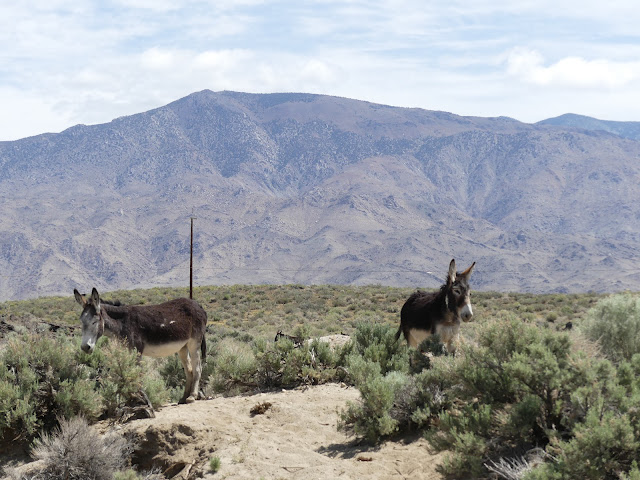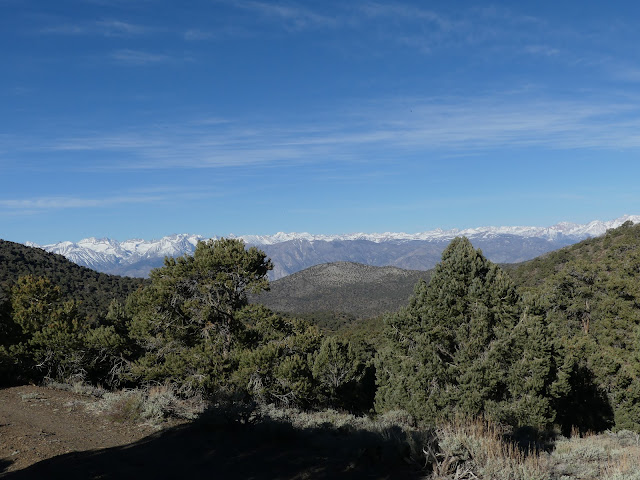Japanese people started to immigrate to the United States back as far as 1882 because they felt they could make a better living. They became citizens and started businesses, not knowing what was in store for them and their descendents in a few decades.
When World War II started, the government decided that Japanese citizens (and, of course, all who were not citizens) should be gathered together for the safety of the rest of the country. The facility on Route 395 in California was named Manzanar. The Japanese citizens were taken by bus to one of the 10 "relocation centers" that had been built specifically for this purpose. They were allowed to take only what they could carry. The ones who had businesses tried to sell them, but many were abandoned.
They were told that the government was protecting them - but the guards organizing the bus transportation had guns with bayonets. When they got to Manzanar, it was enclosed with barbed wire with a guard tower.
There were rows of barracks for them to inhabit, their beds were bags filled with straw. There were 36 blocks of barracks that held the 10,000 people who resided at Manzanar. There were too many people to have any privacy. Windstorms made life difficult, as well as sweltering sun in the desert in the summer. The photo above shows how close the barracks were.
There were multiple in the rooms, some hung cloth up to provide minimal privacy.
Bathrooms were built with sinks as shown below, as well as toilets and a shower room.
Most of the buildings are gone now, with just concrete slabs marking the locations. The Federal government had made an agreement to remove the buildings to restore the land. The buildings were sold at $330 each, or were deconstructed. Some of the buildings were moved to other towns to become motel rooms or private homes, in one instance. Now there are only a few buildings.
There was school for the children. A non-Japanese woman volunteered to come teach them since she thought the entire situation was wrong.
There was a mess hall and the staff put in long days to feed everyone, although the food was not that appetizing and not what they were used to.
\
They had a ball field for games, as well as a band so they could have dances in the mess hall. They made a rock garden with running water, a soothing place to sit and relax. There was a fish pond, a farm and garden and a chicken ranch, as well as a hospital with staff. I'm sure that some of the residents worked in those areas.
There is a cemetery monument with a few graves and this memorial.
This is at the cemetery site - colorful folded paper, origami.
There was also a factory to produce woven camouflage nets for the Army. There was some discontent among the workers, sparking a riot and soon the factory closed. There was a mattress factory near the weaving shop, but unfortunately it burned in 1943. By 1944, there were other goods produced there by the residents including clothing and furniture, as well as agriculture. At that point, they were pretty much self-sufficient. All those buildings are gone also.
At the end of the war, they were given $25 and a ticket. From 1990 to 1999 the government sent an apology letter, along with $20,000 to the inhabitants of all of the 10 camps, 82,000 people. I don't remember any of this in my history classes, I wonder if anyone else remembers anything about this.



































































